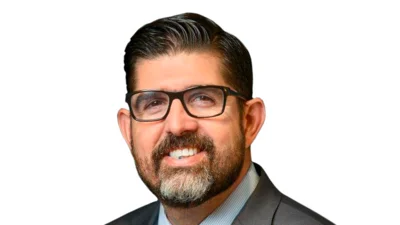The ancient Greek philosopher Aristotle once said, “In all things of nature there is something of the marvelous.”
Through a partnership between the Blue Ridge Foundation’s Kids in Parks Program, University of Florida, USDA Forest Service and City of Gainesville Parks, Recreation and Cultural Affairs Department, “something of the marvelous” has been brought to Gainesville in the form of Track Trails, a network of family-friendly outdoor adventures that engage children with nature and promote healing and wellness.
Gainesville is well known for its natural beauty and the abundance of state parks, preserves, conservation areas and public gardens that cultivate the outdoor explorer in locals and visitors alike. Yet in our increasingly digital culture, more and more children are choosing their favorite video game or binging the latest Netflix hit over playing outdoors. Research shows that spending time outdoors and in the presence of nature has countless benefits for personal wellness across the lifespan, from physical and mental health to emotional and behavioral wellbeing. But how can children foster a deeper connection to their natural environment in our progressively more “plugged-in” world?
That’s where the Track Trails program, with various trails and adventures in states across the country, comes in. Gainesville is now home to the first and only trails in the state of Florida. Self-guided trails have been constructed at three different community parks: Hogtown Creek Headwaters Nature Park, Loblolly Woods Nature Park and Morningside Nature Center, with two additional trails currently in the works.
These Track Trails offer interactive outdoor adventures and activities, such as the “Nature’s Hide and Seek” scavenger hunt at Hogtown or the “Birds of Gainesville” bird spotting activity at Loblolly, which can be accessed through brochures available at each site or the e-Adventures section of the Kids in Parks website. In addition, children and families can track their adventures and even earn prizes by logging their completed explorations on the Kids in Parks online portal.
Tara Sabo-Attwood, Ph.D., a professor and chair of the department of environmental and global health at the UF College of Public Health and Health Professions, played an integral role in the development of Gainesville’s Track Trails.
“The idea began with the creation of the UF Health Children’s Healing Garden, a green space for medical staff to bring children and patients outdoors,” she said.
Sabo-Attwood, also the college’s associate dean of faculty development, cultural affairs, and wellness programs, has been working in environmental toxicology and public health throughout her career. She became interested in the intersection of nature and wellness though her research and observation of the stress levels many people experience in the workplace. She developed and implemented the College of Public Health and Health Professions’ comprehensive wellness program known as Promoting Happy Healthy People. The program centers on engaging in activities that do not require a lot of time and effort. Many of the activities involve the outdoors, such as turning an office meeting into an outdoor walking meeting.
The positive feedback from this program, and the fact that employees continued with wellness initiatives even during program breaks, helped solidify Sabo-Attwood’s desire to bring Track Trails to Gainesville and the broader Florida community.
“My dream would be to see this has very positive impacts on communities, not just children, but teens, adults, older adults, everyone really,” she said.
Sabo-Attwood and UF Health partnered with Annie Hermansen-Baez, science delivery coordinator with the USDA Forest Service, Southern Research Station; Linda Demetropoulos, nature manager with the City of Gainesville Parks, Recreation and Cultural Affairs Department; and Chuck Higgins, a recent retiree of the National Park Service, as well as the Kids in Parks team, to bring the three Track Trails to Gainesville.
“When I think back to my childhood, and what had the most impact on me, all I can point back to is those early experiences as a child getting outside. Having that early exposure, they’ve shown through studies, has an enormous impact on how children will care about the environment as adults,” Hermansen-Baez said. “The intent is to instill that lifelong love and passion for the outdoors.”
Both Sabo-Attwood and Hermansen-Baez believe the best way to engage with the outdoors is just getting out and doing it, however long you can.
“It’s remembering that you don’t have to go very far to get your kids outside,” Hermansen-Baez said. “I was asked the other day, ‘Where is your favorite outdoor space?’ And I said, ‘My backyard.’ Just having an appreciation for that backyard environment, your own neighborhood, your own community, that’s enough to have a huge impact.”
Sabo-Attwood encourages individuals and families to broaden their interpretation of outdoor spaces.
“I think this notion that you must be outside for long periods of time to get benefit, or you must be in some green grassy field, isn’t the case. Track Trails don’t have to be on a green or wooded trail at a park,” explains Sabo-Attwood. “There’s one, for example, that goes through the city of Washington D.C., and there have been several that have been constructed on schoolyards, YMCAs, etc. You can put one anywhere. I think we must change our mindset a little bit about what we think of when we say being outdoors in nature.”
Visit kidsinparks.com to learn more about Track Trails and to find a trail near you.
 Original source can be found here.
Original source can be found here.





 Alerts Sign-up
Alerts Sign-up